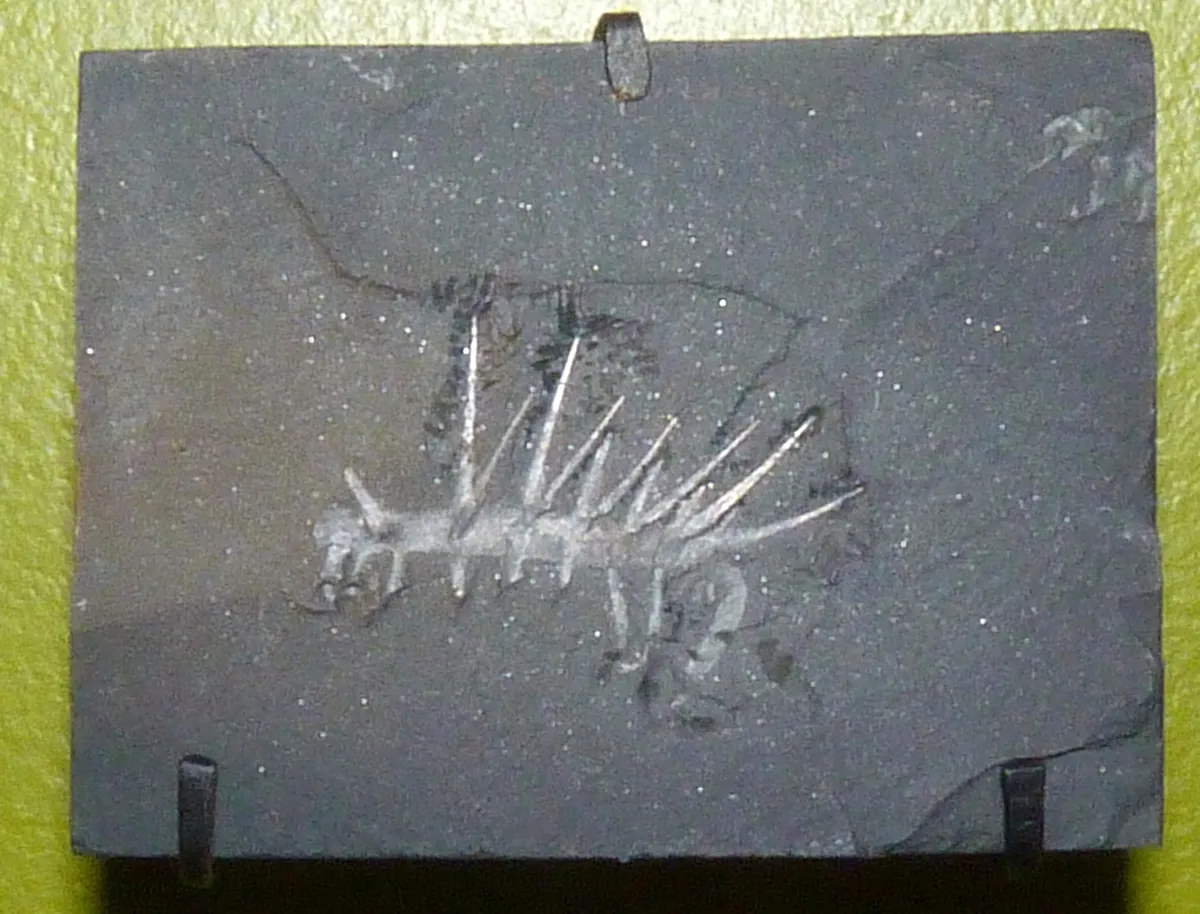Named for its ‘bizarre and dream-like’ appearance, hallucigenia was a finger-sized ocean-dweller that lived during the Cambrian Period around 508 million years ago. It belonged to a group called the panarthropods, which later gave rise to velvet worms, water bears and arthropods.
In 1977, British palaeontologist Simon Conway Morris determined that it had seven pairs of stilt-like legs sticking down, and seven pairs of mouth-tipped tentacles pointing up. Then more specimens were analysed, and this interpretation was turned upside down… literally. Scientists realised that the ‘tentacles’ were, in fact, claw-tipped legs that pointed down, and the ‘legs’ were actually pointy spines that protruded upwards.
Hallucigenia was now the right way up, but no one knew which end was the head. Then in the mid-2000s, modern microscopy methods were applied, and hey presto, the longer of the two ‘sticky-out bits’ was found to contain, not just eyes, but a mouth too. Behind the head, three hitherto unknown pairs of appendages were discovered, and the legs were shown to be jointless.
Hallucigenia, it’s thought, may have walked by altering the pressure of the fluid inside its legs, much like a modern-day starfish.

Read more:
- What is an echidna?
- What is a great potoo?
- What is an axolotl? Everything you need to know about this charismatic amphibian
- What is a coelacanth?
To submit your questions email us at questions@sciencefocus.com (don't forget to include your name and location)